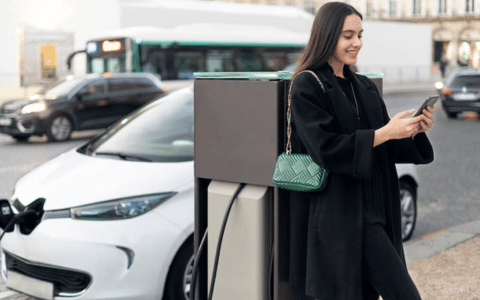What You Need to Know About Electric Vehicle Subscription Services in 2025

- What Are EV Subscription Services?
- How Do EV Subscription Services Work?
- Top Electric Vehicle Subscription Providers in 2025
- What’s Included in a Subscription?
- Benefits of EV Subscription Services
- Downsides to Consider
- Is an EV Subscription Right for You?
- EV Subscription vs. Leasing vs. Buying
- How EV Tax Credits Might Affect Subscriptions
- FAQs About EV Subscription Services
- Conclusion
The electric vehicle (EV) industry is evolving rapidly. While car ownership and traditional leasing still dominate the market, EV subscription services are emerging as a flexible, cost-effective, and commitment-free alternative. Whether you’re EV-curious or an eco-conscious commuter, understanding this growing trend can help you decide if it’s the right move for your lifestyle and budget.
In this guide, we’ll break down everything you need to know about EV subscription services in 2025—from how they work to what you should consider before subscribing. We’ll also compare major providers, outline pros and cons, and answer the most common questions.
What Are EV Subscription Services?
An EV subscription service is a flexible alternative to buying or leasing an electric vehicle. For a flat monthly fee, subscribers get access to an EV along with insurance, maintenance, roadside assistance, and often even charging options.
Think of it like Netflix, but for cars—you don’t own the vehicle, but you have the freedom to use it without the long-term responsibility.
How Do EV Subscription Services Work?

The process is simple:
Choose a Plan: Select a provider and pick from various EV models and subscription tiers.
Get Approved: Submit a driver’s license and undergo a background check.
Vehicle Delivery or Pickup: Your EV is delivered to your door or available for pickup.
Monthly Payments: Pay one flat rate covering the vehicle and included services.
Swap or Cancel Anytime: Some plans let you switch cars or cancel with short notice.
Top Electric Vehicle Subscription Providers in 2025
Here’s a look at top EV subscription providers leading the market in 2025:
| Provider | EV Models Available | Monthly Cost (Starting) | Highlights |
|---|---|---|---|
| Autonomy | Tesla, Rivian, Fisker | $600–$1,000 | Tesla-focused, flexible terms |
| Hertz My Car | Polestar, Nissan Leaf | $650–$1,100 | Backed by Hertz rental infrastructure |
| Finn | Audi, Tesla, Hyundai | $800–$1,500 | Includes insurance & carbon offset |
| Care by Volvo | Volvo XC40, C40 Recharge | $950+ | Only Volvo vehicles, premium perks |
| Kyte | Various compact EVs | $595+ | App-based, great for short-term use |
Note: Pricing and availability may vary by region.
What’s Included in a Subscription?

Most EV subscription services cover:
Vehicle access
Insurance
Maintenance and repairs
Registration and taxes
Roadside assistance
Flexible contracts
Some providers also offer:
Home delivery
Free charging access
Vehicle swaps
This “all-inclusive” model removes the usual headaches of car ownership.
Benefits of EV Subscription Services
Here’s why EV subscriptions are becoming popular:
No Long-Term Commitment
You can try electric driving without being locked into a multi-year lease.
Everything in One Payment
Insurance, maintenance, and roadside assistance are bundled.
Try Multiple EVs
Some services allow vehicle swaps every few months—great for enthusiasts.
Low Upfront Costs
Many plans require only a refundable deposit or minimal sign-up fee.
Great for Urban Dwellers
If you don’t drive every day, flexible EV access makes more sense than owning.
Downsides to Consider
Higher Monthly Costs
Subscriptions often cost more per month than leases or loans.
Limited EV Model Availability
Selection may be narrower than what you’d find in the retail market.
Mileage Limits
Most plans cap mileage—exceeding it can incur hefty fees.
No Ownership Equity
You’re paying for usage, not investing in a long-term asset.
Is an EV Subscription Right for You?

Consider an EV subscription if you:
Live in a city and don’t drive daily
Want to test EVs before buying
Prefer no-hassle car access
Value flexibility and short-term commitments
Don’t want to deal with insurance and maintenance separately
If you’re planning a long-term investment, buying or leasing may be better.
Tip: Before committing, consider reading our guide on What to Know Before Buying a Rivian Electric Vehicle to see if ownership fits your lifestyle better than subscription.
EV Subscription vs. Leasing vs. Buying
| Feature | Subscription | Leasing | Buying |
|---|---|---|---|
| Ownership |  |  |  |
| Commitment | Low | Medium (2–3 yrs) | High (5+ yrs) |
| Monthly Cost | High | Medium | Low (with loan) |
| Insurance Included |  |  |  |
| Maintenance Included |  | Sometimes |  |
| Flexibility |  |  |  |
| Model Swapping |  |  |  |
| Mileage Limit | Yes | Yes | No (if owned) |
How EV Tax Credits Might Affect Subscriptions
According to the U.S. Department of Energy, EV tax credits (like the $7,500 federal credit) typically apply only to purchased or leased vehicles. Subscriptions may not qualify unless the provider structures the contract similarly to a lease.
For more on this topic, see our in-depth guide: Electric Vehicle Tax Credit 2025 Explained
Always ask the provider if any tax incentive is factored into the subscription pricing.
FAQs About EV Subscription Services
1. Are EV subscriptions cheaper than leasing?
No. Subscriptions usually cost more monthly but offer greater flexibility and inclusivity (insurance, maintenance, etc.).
2. Can I get a Tesla through a subscription service?
Yes. Services like Autonomy and Finn offer Tesla models, including the Model 3 and Model Y.
3. What happens if I exceed the mileage limit?
You’ll pay an additional fee per mile—usually between $0.25 and $0.50.
4. Can I cancel my subscription anytime?
It depends. Some providers offer monthly terms, while others require a minimum of 3–6 months.
5. Is credit check required for EV subscriptions?
Yes, most providers perform a soft or hard credit inquiry before approval.
Conclusion
EV subscription services offer an exciting new way to experience electric driving—especially for those who value flexibility, simplicity, and convenience. Whether you’re EV-curious or simply need a car without the long-term strings, subscriptions can bridge the gap between ride-sharing and full ownership.
Before subscribing, weigh the costs vs. benefits, compare providers, and review your driving habits. For many, this could be the perfect on-ramp to the EV lifestyle in 2025 and beyond.

